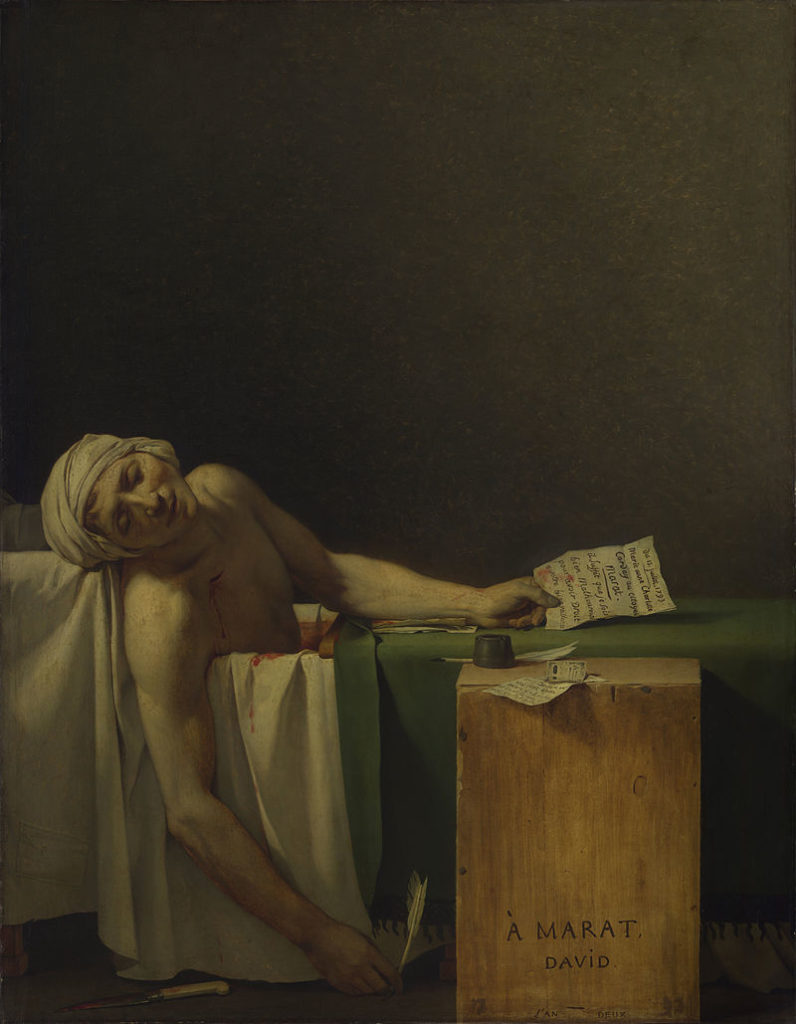In this ongoing series, Fine Art Today delves into the world of portraiture, highlighting historical and contemporary examples of superb quality and skill. This week we delve into the captivating story of Marat and the Revolution his death sparked.
Described by T.J. Clark as “the first modernist painting,” Jacques-Louis David’s (1748-1825) “Death of Marat” is one of the most powerful and famous portraits ever created. The subject is a recently assassinated Jean-Paul Marat — a young French revolutionary leader stabbed as he bathed by counter-revolutionary Charlotte Corday. She was later tried and executed for the murder.
Aside from being skillfully painted, the portrait has revealed much about David’s own political leanings, and the portrait itself is as much about the artist as it was about Marat. To begin, Marat’s corpse is idealized. The revolutionary suffered from a skin condition that caused him to spend much of his time in his bathtub. However, David has not included this in the portrait. Rather, Marat’s skin is clear and clean. Further, the pose of Marat has often been compared to Michelangelo’s “Pietá” and Caravaggio’s famed “Entombment,” which links this martyr of the French Revolution with Christian martyrdom. In his left hand, Marat holds a letter with his instructions and naming his killer, Charlotte Corday.

Located today in the Royal Museums of Fine Arts of Belgium, the painting has been the subject of many interpretations, focusing around David’s subtle choices in how to carefully represent Marat. Several critics have regarded the painting as an “awful beautiful lie,” and in fact, several elements of the painting have been changed to do more than just record the horrors of martyrdom. For example, Marat’s killer — Corday — did not attempt to flee the scene, but she is not included within the piece. Further, the tool of her murder, a knife, is shown lying on the ground rather than where Corday left it, impaled in Marat’s chest.
Like so many artworks, “The Death of Marat” suffered obscurity for a period — from about 1795 through the 19th century —but later inspired a number of early 20th- century artists, including Picasso and Munch. Further, other versions of the assassination inspired by David’s picture survive in large numbers.
This article was featured in Fine Art Today, a weekly e-newsletter from Fine Art Connoisseur magazine. To start receiving Fine Art Today for free, click here.







